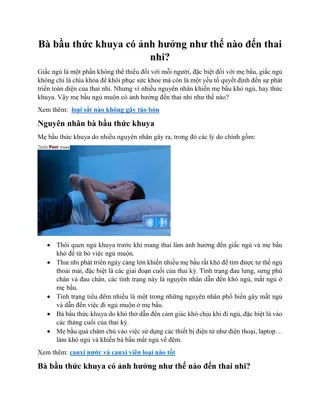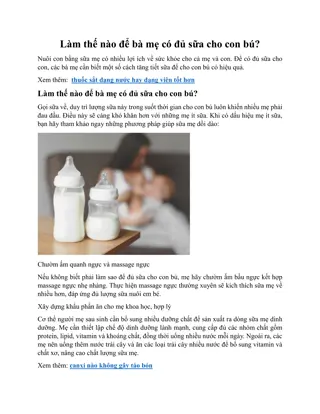History of the Pennsylvania General Assembly Before and After the 1968 Legislative Modernization Commission
The Pennsylvania General Assembly, America's largest full-time legislature, faced chronic deficits and partisan combat in 1968, leading to the creation of a bipartisan Commission on Legislative Modernization. The commission, comprising experienced leaders, aimed to improve legislative performance and structure for better representation and lawmaking. This historic event marked a significant shift in the Assembly's operations and set the stage for modernization and efficiency.
Download Presentation

Please find below an Image/Link to download the presentation.
The content on the website is provided AS IS for your information and personal use only. It may not be sold, licensed, or shared on other websites without obtaining consent from the author.If you encounter any issues during the download, it is possible that the publisher has removed the file from their server.
You are allowed to download the files provided on this website for personal or commercial use, subject to the condition that they are used lawfully. All files are the property of their respective owners.
The content on the website is provided AS IS for your information and personal use only. It may not be sold, licensed, or shared on other websites without obtaining consent from the author.
E N D
Presentation Transcript
The Pennsylvania General Assembly The Pennsylvania General Assembly Before and After the 1968 Legislative Before and After the 1968 Legislative Modernization Commission: A Brief History Modernization Commission: A Brief History Members Symposium February 28, 2011 1
The Pennsylvania General Assembly is America s largest full-time legislature the legislature s job consists of three principal functions: representing, lawmaking, and balancing the power of the executive. Alan Rosenthal How do our legislature s size and professionalism affect its capacity to represent citizens, make laws, and balance the other branches? For insight, we turn to history. 2
March 6, 1968 Plagued with chronic deficits, the General Assembly is locked in partisan combat. Seven of the previous ten budgets have been late by an average of 94 days. It is an era much like ours, not just of fiscal turmoil but of calls for government reform. A new PA Constitution is awaiting the verdict of the voters in a few short weeks. House Majority Leader Lee Donaldson, R-Allegheny, calls up HR 207, creating a bipartisan, bicameral Commission on Legislative Modernization. The resolution is approved by both chambers and a commission is appointed. The March 6 House debate (there was none in the Senate) is instructive 3
Majority Leader Donaldson and Minority Leader Fineman make the case Lee Donaldson, R-Allegheny: The resolution says that our General Assembly today is inadequately equipped and structured We struggle along as if we were dealing with the state government which existed a quarter of a century ago The chief executive in many instances has also become the chief legislator. Herbert Fineman, D-Philadelphia: More important even than the weakening of the legislature vis a vis the executive is the weakening of the States The heavy concentration of power in Washington has had some unfortunate consequences Improving legislative performance is perhaps the chief ingredient in making them (the States) efficient and responsive... 4
The 12 commissioners are deeply experienced and widely respected, including: A. James Reichley, Fortune Magazine editor, former legislative aide to Gov. Scranton (House Republicans) George M. Leader, former governor and state senator (House Democrats) Robert E. Woodside, former House majority and minority leader, attorney general, and trial and appellate court judge (Senate Republicans) James A. Michener, Pulitzer prize winning author and secretary to the 1968 Constitutional Convention (Senate Democrats). Michener is elected co-chair. 5
The commission issues its report: Toward Tomorrow s Legislature (January 1969) Based on extensive research and public hearings, the 110-page report makes 58 recommendations, creating what one scholar called an agenda for a decade. Among the recommendations: Increase compensation and staffing for House and Senate members with the expectation that they would give priority to their legislative duties as opposed to their private sector occupations (Done) Provide members and committees with offices(Done) Require members to disclose financial interests (Done) 6
Toward Tomorrows Legislature Toward Tomorrow s Legislature Create a permanent ethics committee (Done: Ethics Committee and Commission established) Respect caucuses but strengthen committees (Done, but done enough?) Improve the professional staffing of committees (Done) Require fiscal notes on legislation (Done) Increase public hearings on legislation (Done) 7
Toward Tomorrows Legislature Reduce and align House and Senate committees (Done, but not to 13 parallel committees)* Open committee meetings and make committee votes available to the press and public (Done) Increase minority representation on committees (Done) Create a legislative audit advisory commission (Done) *The House had 33 committees in 1968. 8
Some recommendations were not (fully) done Require lobbyists to register and report expenditures (Expenditure reporting tried in 1998, completed in 2006) Consolidate legislative service agencies (Not Done) Establish a commission to set salaries for top officials in all three branches (Done, then Undone) Establish bipartisan, bicameral orientations for new members on state structure and operations (Not Done, and why just new members?) Install electric voting in the Senate (Not Done!!!) 9
The commission does not recommend reducing the size of the legislature As secretary of the 1968 Constitutional Convention, Michener lost five times trying to make the House smaller. Instead, the delegates for the first time fixed the precise size of the legislature in the Constitution. The commission: Pennsylvania is a populous state of unusual economic, social, religious and ethnic diversity (which) may warrant a larger legislature than would be appropriate for smaller, more homogeneous states. As commission co-chair, Michener filed a dissent. Why do we have the 2nd largest legislature? 1874! 10
Making the legislature Too Big to Buy: The Constitution of 1874 Reacting to vote-buying scandals,1873 convention delegates almost double the legislature, increasing the Senate from 33 to 50 and the House from 100 to 200.* An 1873 convention delegate: I hope that we shall largely increase the number of the House, and let us have a Legislature that cannot be corrupted... But low-paid, poorly educated, unstaffed, part-time legislators, often working in industries that lobbied them, are still vulnerable to powerful organized interests. *A complex apportionment formula allowed the House to rise slightly above 200 . 11
And the 1874 Constitution also increases the legislature s capacity to represent citizens. Citizens represented by each House member were reduced on average from 35,211 in 1870 to 21,308 in 1880, and by each Senator from 106,699 to 85,658. In a step toward greater equality, the Constitution also allows for the first time districts that are smaller than counties and based on total residents, not just taxpayers. However, each county is guaranteed 1 House member and no city or county can have more than 8 Senators. These limits are struck down after the US Supreme Court s one-person, one-vote decisions. The 1966 reapportionment also ends multi-member districts. 12
After modernization: Balancing executive power By 1973, legislative salaries are doubled (from $7,200 in 1968 to $15,000) and professional staffing is on the rise. In 1975, the four caucus leaders ask the Pennsylvania Economy League to recommend improvements in the state budget process. Among the study s recommendations: The General Assembly should appropriate all federal funds. In a $5 billion state budget, the governor is spending $1.5 billion in federal funds without legislative oversight. 13
In a victory for all state legislatures, the US Supreme Court upholds the Pennsylvania law The professionally staffed House Appropriations Committee documents how the executive has used its control of federal funds to manipulate the legislature. The General Assembly overrides the governor s veto of SB 1542 of 1976, prohibiting the Treasurer from spending federal funds not appropriated by the legislature. The legislature begins appropriating all federal funds in line-item detail. Gov. Shapp challenges the law. In landmark decisions, the General Assembly wins in the PA Supreme Court (4- 2) and in the US Supreme Court (8-1). 14
Balancing judicial power In 1993-94, employing staff lawyers aided by outside counsel, the House impeaches (199-0) and the Senate removes (49-0) Rolf Larsen from the Pennsylvania Supreme Court for according special treatment to certain lawyers. Larsen is the first judge of any PA court removed from office pursuant to legislative action since 1811. Some issues end in a stand-off. The General Assembly ignores two orders (1987 and 1996) by the PA Supreme Court to pay for county court costs, and the court makes no effort to enforce its orders. 15
Balancing the bureaucracy In the 1970s, the professionally staffed Appropriations Committees begin holding extensive hearings to review state agency budgets and program implementation. Bureaucratic regulation explodes from the 1960s on. In 2009, for example, state agency regulations total 5,988 pages; laws enacted by the legislature total 946 pages. In 1982, the General Assembly establishes the Independent Regulatory Review Commission to work with House and Senate committees in reviewing and modifying, and potentially disapproving regulations. 16
Cooperation as well as conflict marks the post- modern era In 1975, on its own bipartisan initiative, the Senate (with House support) dramatically reduces the number of gubernatorial appointees requiring a two-thirds vote for confirmation and imposes deadlines on a failed process that has deadlocked state government. In 2006, the General Assembly re-enacts a lobbying regulation law after reaching agreement with the Supreme Court allowing lawyer-lobbyists to be covered. In 2009-10, the General Assembly establishes an inter- branch commission to investigate judicial corruption in Luzerne County. 17
Responding to press exposs, budget battles, and prosecutions, the General Assembly Professionalizes its administrative systems under bipartisan committees (1978-80). Ignores gubernatorial opposition and approves the Attorney General as an elected prosecutor (1977-78). Builds much-criticized surpluses (now being depleted) after Gov. Casey vetoes the Senate s budget (1988). Repeals its 2005 pay raise, curtails late-night and lame- duck sessions, lengthens notice before votes, clarifies rules against the political use of public resources, and cuts its spending by $45 million (in 2010 dollars). 18
The Disappearing Capitol Press Corps* The legislature governs in a new media world Internet technology gives citizens and critics new ways to hold legislators accountable, assisted by a legislature that is making more information available. Some worry that falling revenues are forcing the press to choose between watchdog and journal-of-record roles. As Capitol news bureaus are cut back here and across the US, are citizens learning enough about state policy from professional journalists vs. bloggers, talk-show hosts, and single-purpose advocates? *Governing magazine cover story, January 2009. 19
Todays General Assembly: large (1874) and professional (1968) These characteristics involve tradeoffs in values. Large legislatures arguably enhance representation; they are more responsive to smaller communities and minority groups and more accessible to citizens. Smaller legislatures enhance deliberation, might cost less (but not in California), and are easier to manage. Professional legislatures are arguably more experienced and better equipped to balance the other branches and counter interest group influence. Part-time legislatures cost less; members may have fewer ties to lobbyists and are arguably less invested in staying in office. 20
Size and professionalism reflect intangible values and affect the legislative budget Values like representation, deliberation, efficiency, and balancing the other branches are difficult to quantify. PA s legislative budget is large compared to other states (2nd to California), but small (and declining) as a share of total state spending (about half of one percent). You will hear next from witnesses who helped make and implement key decisions to modernize our legislature. History shaped today s General Assembly. Understanding history should shape tomorrow s. 21
The Pennsylvania General Assembly Before and After the 1968 Legislative Modernization Commission: A Brief History Presented to the Pennsylvania General Assembly Members Symposium Sponsored by the Pennsylvania Policy Forum Produced by: Joseph P. McLaughlin, Jr., PhD, director, Temple University Institute for Public Affairs Assisted by: Richard A. Stafford, MS, distinguished service professor of public policy and management, Heinz College, Carnegie Mellon University; Michelle J. Atherton, MA, assistant director, Temple University Institute for Public Affairs; Megan Mullin, PhD, assistant professor of political science, Temple University; Nathan Shrader, MS, PhD candidate in political science, Temple University For a forthcoming text version of this history, email papolicyforum@temple.edu. The Pennsylvania Policy Forum is a consortium of professors in public and private universities who teach and research state politics and policy chaired by David Y. Miller, PhD, Graduate School of Public and International Affairs, University of Pittsburgh. Research for this presentation was made possible by the William Penn Foundation and the Heinz Endowments. The views and any errors are the author s own. 22





















